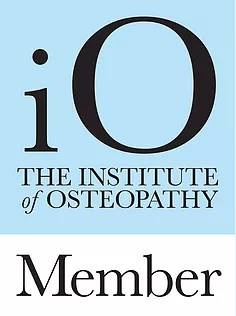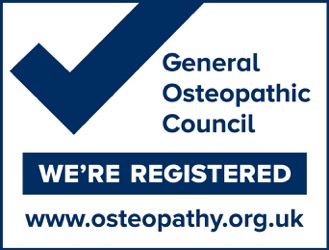Welcome
West London Osteopaths is a clinic based in Shepherds Bush W12, established in 1984. David Tatton together with osteopaths Shambhu Manandhar and Alfie Munding offer osteopathic care of the highest standard.
Osteopathy is a system of healthcare that assesses, diagnoses and treats the whole body and many health problems. It considers all aspects of a patient's life, examines many of the systems of the body to make an evaluation of the general health of the patient and identify the damage, strains and tensions causing the symptoms. Osteopathy can help all ages, from infants and children to adults and the elderly who can benefit from the gentle application of osteopathy to help improve the structure and function of the body.
GET IN TOUCH
BOOK AN APPOINTMENT ▸
Telephone 020 8749 0581
Emergency contact number 07595 563 048 (only use outside clinic hours)
BELOW ARE EXAMPLES OF WHAT WE TREAT AT WEST LONDON OSTEOPATHS. THIS IS NOT AN EXCLUSIVE LIST BUT MIGHT HELP YOU UNDERSTAND THE TYPE OF CONDITIONS FREQUENTLY TREATED BY OUR OSTEOPATHS.
If you have any questions please do not hesitate to call us.
-
Back pain can be caused as the result of straining the spinal ligaments, intervertebral discs, facet joints and muscles. Often brought on by trauma from accidents, sporting injuries or activities at work from poor lifting/working practices or poor ergonomics in the office situation.
Sometimes inadequate support in the car driving position can result in chronic strain of the spine.
Symptoms can be felt especially in the low back and neck, but can present in the thoracic spine (chest spine) or may be involved in a strain of the pelvic joints.
-
Typically the nerves in the low back, the sciatic nerve (sciatica) and the femoral nerve can be affected. These nerves will often give pain in the thigh, leg and occasionally the foot.
Spinal nerves can be irritated by intervertebral disc herniations (commonly called slipped discs) or as the nerve exits the spine through the intervertebral foramen.
The brachial plexus of nerves from the neck can be similarly irritated giving symptoms in the arm and hand.
Nerves can also get irritated on their journey through the body and give symptoms locally or onwards to their destination in the body.
Symptoms experienced might be tingling sensations, pins and needles or numbness in some parts of the distribution of the nerve. Muscle weakness may also be a feature of a nerve being trapped.
Your osteopath will be able to examine you, give an evaluation and if appropriate apply osteopathic treatment to alleviate your symptoms.
-
Pain in the shoulder can be as a result of a strain of the ligaments and muscles of the shoulder joints. Typically patients might complain of ‘frozen shoulder’, rotator cuff muscle strains. This can be as a result of a sporting injury or after trauma from a fall.
Ergonomics of the work place, at the desk with computers/phones, the set up of seats and steering wheel position in the car. Symptoms often coming on gradually as the body is less able to cope and compensate for the activity over prolonged periods.
Sometimes shoulders can give pain and stiffness from rheumatic conditions. A full osteopathic history and examination will be very important in evaluating these types of conditions and sometime require referral back to your GP for further tests.
-
Osteoarthritis can affect many joints of the body. The weight bearing joints of the spine especially in the low back and also the neck can especially affected.
Arthritis can also affect hips, knees, ankles and feet often caused by injuries in the past that might have damaged the joints and accelerated the degenerative process.
Arthritis can also occur in the upper extremity affecting the shoulders and the wrists to the fingers often aggravated by excessive use in sports, manual work or long time spent at the keyboard. Your osteopath will assess the joints as part of the osteopathic examination process.
There are different types of arthritis and rheumatic diseases that may also present in the joints and other systems of the body. Your osteopath may refer you back to your GP for blood tests to see if there are other diagnoses of these conditions.
-
Head pain can present in many ways. Commonly presenting as headache that may be focused in different parts of the head.
Often people may suffer from migraines that can often be triggered differently, eg from stress, allergic responses to food / alcohol etc.
Osteopathy can often help with these symptoms, reducing pain and help to cope and manage the headaches.
-
Respiration and breathing can be affected in many ways from allergic responses to other respiratory conditions.
How your body copes with the effects of respiratory distress can often be helped by osteopathy to help the muscles of the rib cage and many of the other muscles of respiration in the neck, shoulders, low back and pelvis and of course the diaphragm.
Good respiration will also help the circulatory system of the blood and lymphatic systems.
-
Walking is one of the best forms of exercise that should be easily assessable to all. Gait can be affected by problems of the lower extremity joints, hips, knees, ankles and feet. As mentioned above helping the function of these joints can help overall mobility and gait.
Problems of the foot and ankle from strains/sprains that do not fully repair can impede good gait. Osteopathic examination can evaluate the function of the lower extremities. We can also offer advise on gait and prescribe exercises to help function.
Running can also be helped by osteopathy to help the efficiency of your stride by working through the whole spine, shoulders and lower extremities.
-
An important part of recovery and body maintenance will be advice and often a prescription of self-help exercises from your osteopath to do at home/gym; this will help flexibility and build up muscular support.
We also have the West London Pilates Studio (www.pilateswestlondonosteopaths.com) at the clinic providing 1:1 or small group mat/equipment classes. Many patients have benefitted with long lasting periods of relief and management of their symptoms.
We also use rehabmypatient.com to give a schedule of detailed exercises together for you to do at home, gym or any at any suitable time.
With this schedule you will get a description and photo of the exercise and a YouTube link to the exercise in action.
We can also advise on the ergonomics of your work-station, vehicle driving position and techniques on performing your sport or other activities safely and with the least damage and stress to your body.
The team at West London Osteopaths is here to help you to deal with the rigours of modern life and to guide you to well-being and good body understanding. West London Osteopaths provide a comprehensive yet individually tailored approach for each patient.
The clinic looks after patients from Notting Hill, Kensington, Knightsbridge, Chelsea, Fulham, Hammersmith, Putney, Chiswick, Ealing, Acton, Greenford, Northolt, Queens Park, Hampstead, Highbury, Kew, Richmond and many people travel from all over the UK, Europe and others from far further destinations.
65 VEspan Road, london w12 9qg
SERVICES
Osteopathy
CRANIAL OSTEOPATHY
WESTERN MEDICAL ACUPUNCTURE,OR DRY NEEDLING
PILATES - EQUIPMENT & MAT-WORK
DEEP-TISSUE THERAPUTIC MASSAGE
FOCUSED RELAXATION MASSAGE
COUNSELLING
HOURS
Monday - Friday: 8:00am - 7:00pm
Saturday: 8:00am - 2:00pm
Sunday: Closed but emergency visits available



